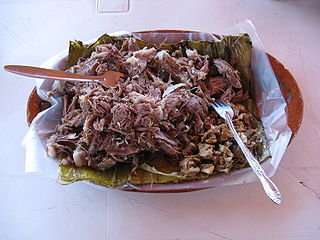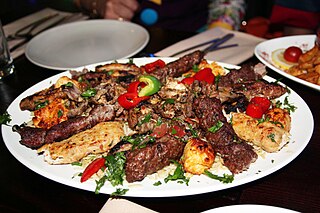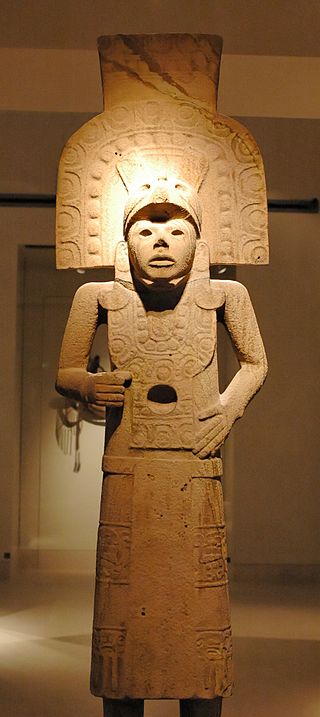
Tamaulipas, officially the Free and Sovereign State of Tamaulipas, is a state in the northeast region of Mexico; one of the 31 states which, along with Mexico City, comprise the 32 Federal Entities of Mexico. It is divided into 43 municipalities.

Ciudad Victoria is the seat of the Municipality of Victoria, and the capital of the Mexican state of Tamaulipas. It is located in the northeast of Mexico at the foot of the Sierra Madre Oriental. It borders the municipality of Güémez to the north, Llera to the south, Casas Municipality to the east, and the municipality of Jaumave to the west. The city is located 246 km (153 mi) from Monterrey and 319 km (198 mi) from the US - Mexico border. Ciudad Victoria is named after the first president of Mexico, Guadalupe Victoria.

Tampico is a city and port in the southeastern part of the Mexican state of Tamaulipas. It is located on the north bank of the Pánuco River, about 10 kilometers (6 mi) inland from the Gulf of Mexico, and directly north of the state of Veracruz. Tampico is the fifth-largest city in Tamaulipas, with a population of 314,418 in the city proper and 929,174 in the metropolitan area.

The milanesa is a variation of the Lombard veal Milanese, or the Austrian Wiener schnitzel, where generic types of meat breaded cutlet preparations are known as a milanesa.

Barbacoa is a form of cooking meat that originated in the Caribbean with the Taíno people, who called it by the Arawak word barbaca, from which the term "barbacoa" derives, and ultimately, the word 'barbecue". In contemporary Mexico, it generally refers to meats or whole sheep or whole goats slow-cooked over an open fire or, more traditionally, in a hole dug in the ground covered with agave (maguey) leaves, although the interpretation is loose, and in the present day may refer to meat steamed until tender. This meat is known for its high fat content and strong flavor, often accompanied with onions and cilantro.

MachacaSpanish: [maˈtʃaka](listen) is a traditionally dried meat, usually spiced beef or pork, that is rehydrated and then used in popular local cuisine in Northern Mexico and the Southwestern United States. It is also readily available in many groceries and supermarkets in these areas. In areas where the dried meat product is not easy to obtain, slow-cooked roast beef (brisket) or skirt steak shredded and then fried is sometimes substituted.

The National Professional Basketball League is the top professional basketball league in Mexico. The league was founded in 2000 with 10 teams. Despite its short history, the LNBP has established itself as the one of the most important basketball leagues in Latin America.

Adobada is a preparation for many dishes that are common in Mexican cuisine. Adobada is generally pork marinated in a "red" chili sauce with vinegar and oregano, but it can refer to different types of meat and to marinades closer to al pastor. It is generally served on small, pliable corn maize tortilla along with sautéed vegetables and cheese.

La Huasteca is a geographical and cultural region located partially along the Gulf of Mexico and including parts of the states of Tamaulipas, Veracruz, Puebla, Hidalgo, San Luis Potosí, Querétaro and Guanajuato. It is roughly defined as the area in which the Huastec people had influence when their civilization was at its height during the Mesoamerican period. Today, the Huastecs occupy only a fraction of this region with the Nahua people now the most numerous indigenous group. However, those who live in the region share a number of cultural traits such as a style of music and dance, along with religious festivals such as Xantolo.
XHEOLA-FM is a Mexican Spanish-language FM radio station located in Tampico, Tamaulipas. The frequency is 103.5 MHz.
Tamuín is a municipio in the Mexican state of San Luis Potosí. Tamuín is internationally renowned for three archaeological sites representative of the precolonial Huastec culture.
Pueblo Viejo is one of the 212 municipalities of the Mexican state of Veracruz. It is located in the state's Huasteca Alta region. The municipal seat is the city of Ciudad Cuauhtémoc, Veracruz.

Tampico Alto is one of the 212 municipalities of the Mexican state of Veracruz. It is located in the state's Huasteca Alta region, at the northern end of Tamiahua Lagoon. The municipal seat is also called Tampico Alto.

A platter is a large flat dish or plate, typically oval or circular in shape, used for serving a meal or course.

Balcón de Montezuma, also known as "Balcon del Chiue" is an archaeological site located at the Alta Cumbre ejido, some 18 kilometres (11.2 mi) south of Ciudad Victoria, in the state of Tamaulipas, México. It is situated about one kilometer north of Highway 101, towards San Luis Potosí.

Las Flores is an archaeological site pertaining to the Huastec civilization in the city of Tampico, Tamaulipas, in Mexico.

Doblada in Mexican food, is a corn tortilla or wheat tortilla, folded one time, forming a half circle, or folded twice forming a quarter circle, which is sauteed in oil, covered with sauce and sprinkled with cheese. As a garnish, it can accompany some dishes as in carne a la tampiqueña or be an appetizer, as in enchiladas or enfrijoladas with no chicken filling.
Federal Highway 70D is the designation for toll highways paralleling Mexican Federal Highway 70.
Same-sex marriage has been legal in Tamaulipas since 19 November 2022. On 26 October 2022, the Congress of Tamaulipas passed a bill to legalize same-sex marriage in a 23–12 vote. The bill was published in the official state journal on 18 November, and took effect the following day. Tamaulipas was the second-to-last state in Mexico to legalize same-sex marriage.























